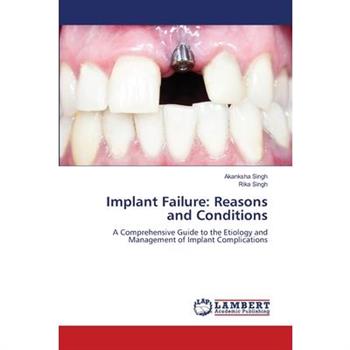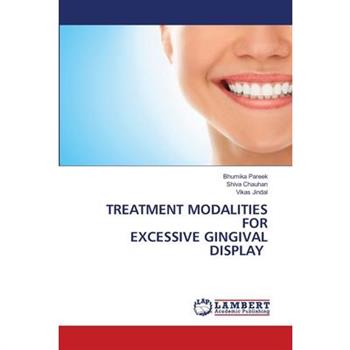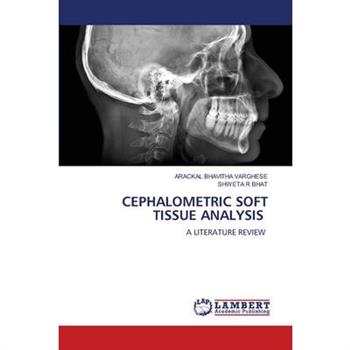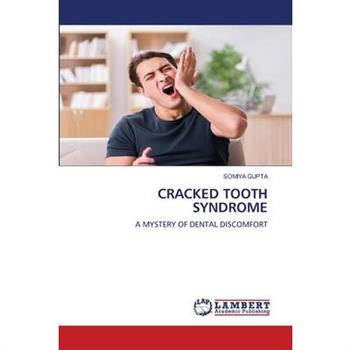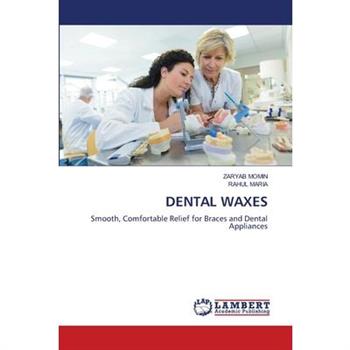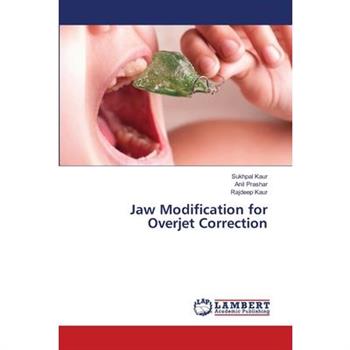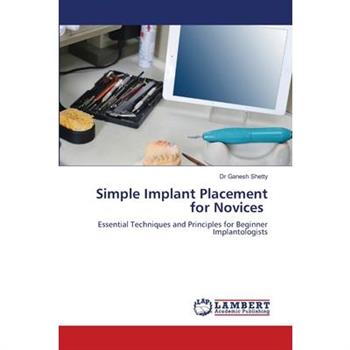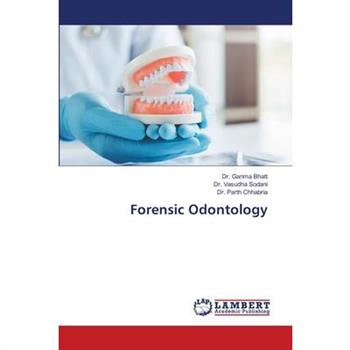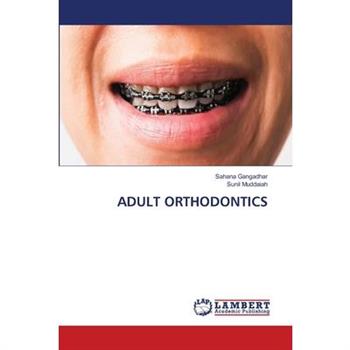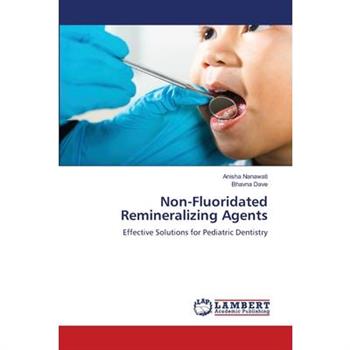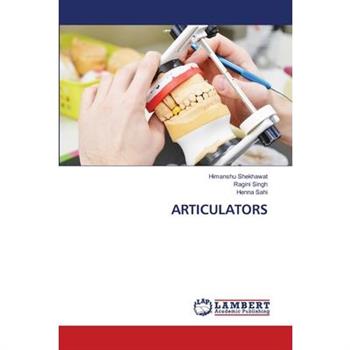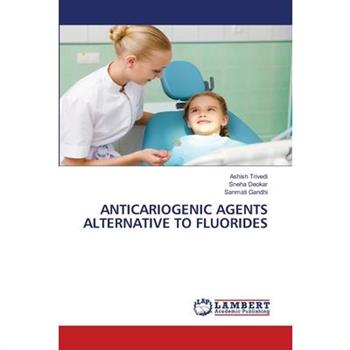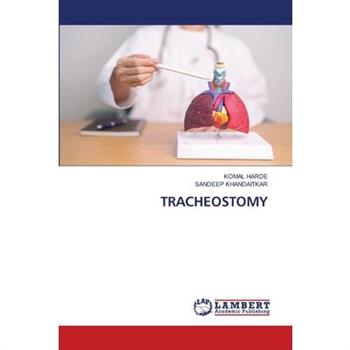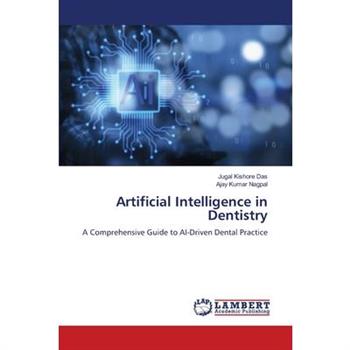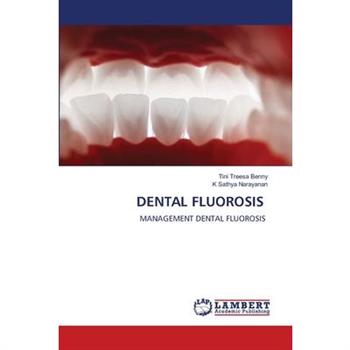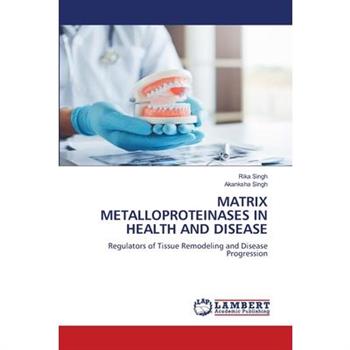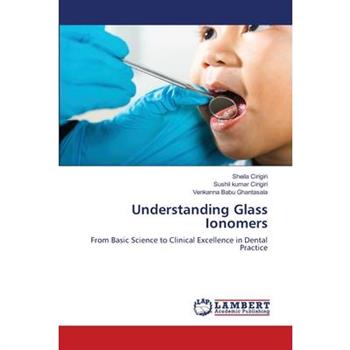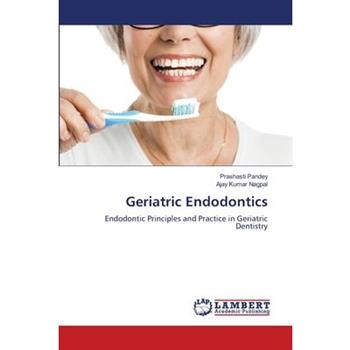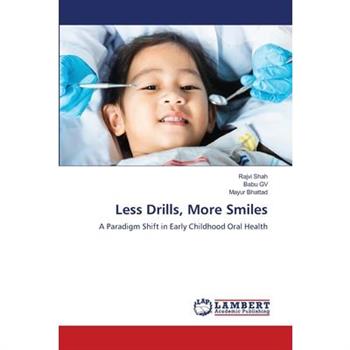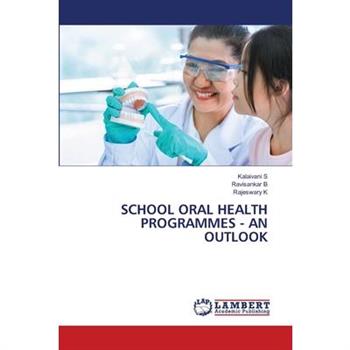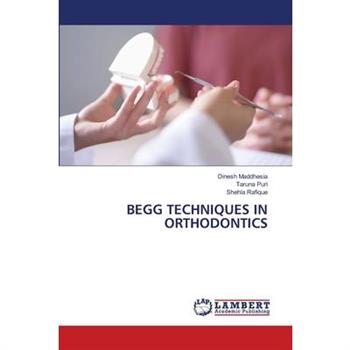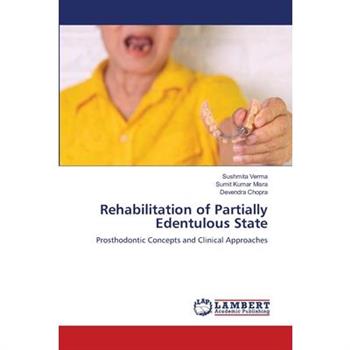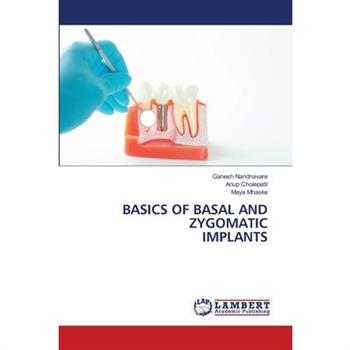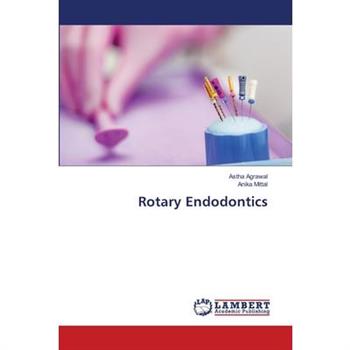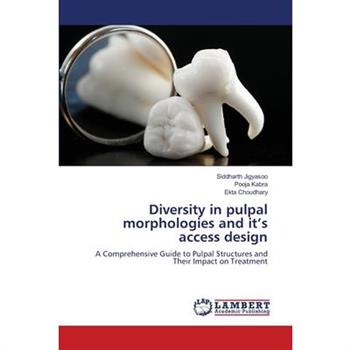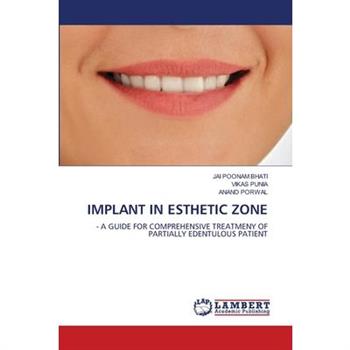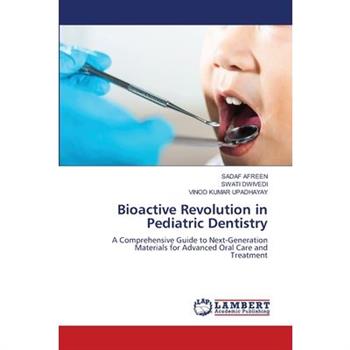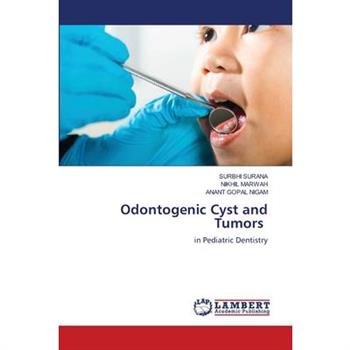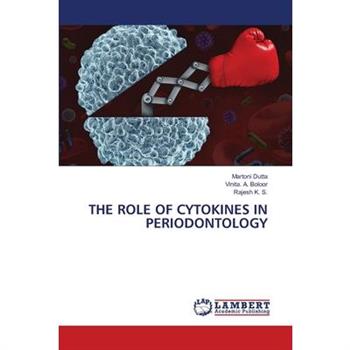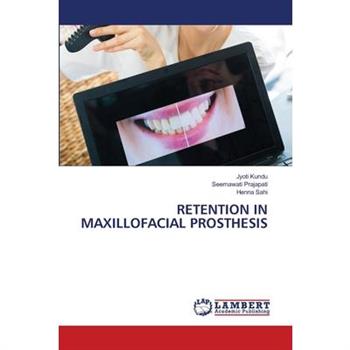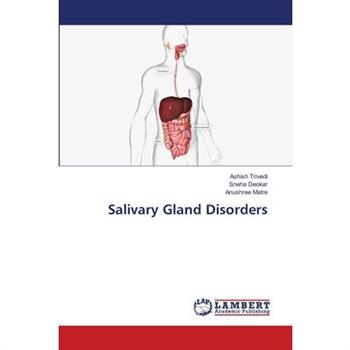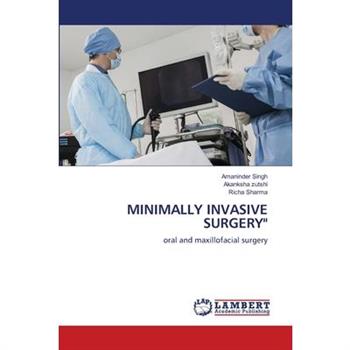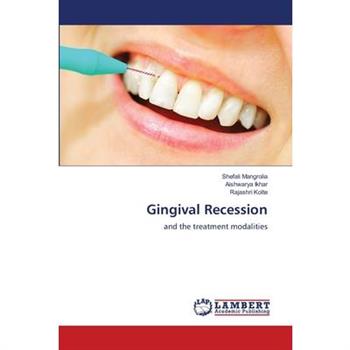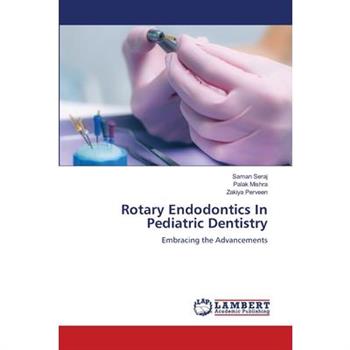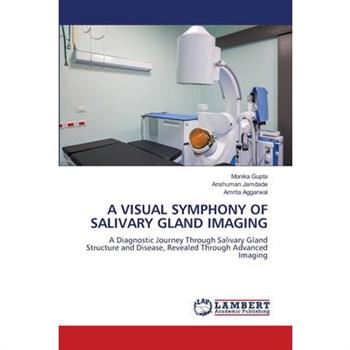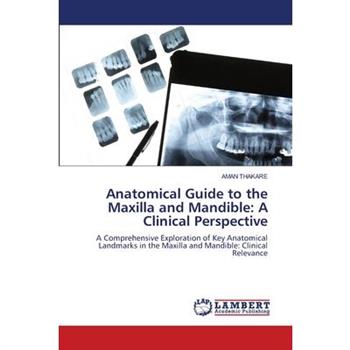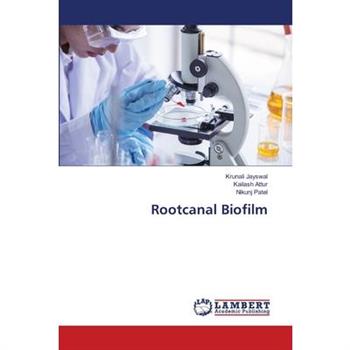Implant Failure
Implant Failure: Reasons and ConditionsDental implants are one of the most successful and widely adopted treatment modalities in modern dentistry, boasting high long-term survival rates. Yet despite decades of progress in surgical techniques, biomaterials, and prosthetic design, implant failure continues to be a significant clinical challenge. When an implant fails-whether early in the healing phase or years after placement-it carries not only biological and mechanical consequences but also emotional, functional, and financial implications for patients and clinicians alike.Implant Failure: Reasons and Conditions offers a comprehensive and evidence-based exploration of the complex factors that contribute to the failure of dental implants. Bridging foundational science with clinical application, this book brings clarity to the multifactorial nature of implant complications, enabling readers to better understand, diagnose, prevent, and manage failures in practice.Written by specialists in periodontology, this resource dives deep into the biological, mechanical, systemic, and iatrogenic reasons that underlie implant failure.
Treatment Modalities for Excessive Gingival Display
An ideal or an esthetic smile is equally dependent on the gingival display as well as the tooth shape, size, color, position and symmetry; where lips govern the display of the teeth and the gingiva. There have been studies conducted which indicate that the amount of gingival display on smiling is a very crucial factor to smile attractiveness. Thus, this library dissertation highlights various treatment modalities that can be employed to correct the gummy smile or the excessive gingival display whilst considering the variable long standing etiological factors leading to the establishment of the gummy smile.
Cephalometric Soft Tissue Analysis
Orthodontic correction doesn't always improve or maintain facial aesthetics, and sometimes it can even harm facial balance. Over the past two decades, orthodontic diagnosis has shifted from focusing on hard tissue to placing greater emphasis on soft tissue, driven by patients' increasing recognition of improvements in facial and smile appearance. Today, orthodontic treatment planning prioritizes soft tissue relationships over hard tissue.
Cracked Tooth Syndrome
Cracked Tooth Syndrome (CTS) is a complex and often elusive dental condition that presents diagnostic and therapeutic challenges for clinicians. Frequently seen in posterior teeth, especially those with extensive restorations or a history of bruxism, CTS is characterized by incomplete cracks that cause sharp pain during biting or sensitivity to temperature-yet often evade detection on radiographs and routine exams.This comprehensive guide delves into the multifactorial nature of CTS, exploring its etiology, clinical presentation, and the subtle nuances that make diagnosis difficult. .Combining clinical expertise with the latest research, this book equips dental professionals with the knowledge to manage CTS proactively and prevent progression to tooth fracture or loss. Whether you're a general dentist, endodontist, or dental student, this essential resource will enhance your understanding and confidence in addressing one of dentistry's most deceptively challenging conditions.
Dental Waxes
Dental wax is a material commonly used in dentistry for a variety of purposes. It is typically used to help soothe irritated gums, especially after orthodontic work, such as the placement of braces. When applied to braces or other dental appliances, the wax creates a smooth surface that reduces discomfort caused by sharp edges. Additionally, dental wax can be used to protect sensitive areas in the mouth during the healing process after oral surgeries or procedures. It is easy to apply, safe to use, and can be molded to fit specific areas of the mouth. The wax is removable, non-toxic, and usually made from ingredients like paraffin, beeswax, and other safe materials.
Jaw Modification for Overjet Correction
Jaw modification in Orthodontics is used to correct discrepancies related to maxilla and mandible. The discrepancy can be related to jaw size or position of jaw, resulting in various types of malocclusion including increased overjet or reverse overjet. Jaw discrepancy can be corrected using functional appliances and orthopaedic appliances during growing age, but if growth has been completed, growth modification is not possible. In those cases we need orthognathic surgery to treat skeletal discrepancy. Therefore, it is better to diagnose skeletal discrepancy in early age to treat it using growth modification preventing need of jaw surgery. As normal overjet not only aids in enhancing facial esthetics but also necessary for appropriate functioning. This book will give insight on different treatment options, can be used to treat abnormal overjet.
Temporomandibular Joint Disorders
For many years, the temporomandibular joint has been a feature of the human anatomy that both dentistry and medicine have been interested in. Because of its anatomy and movement, the temporomandibular joint is complicated. Continuous evaluation attempts are being made to offer a more solid basis for creating diagnostic standards for temporomandibular joint disorders. Many people now suffer from temporomandibular joint disorder, which they find uncomfortable despite available treatments. Although treatment modalities have improved the prognosis of TMD, the inability to properly diagnose this disorder nevertheless continue to be problematic for both patient and doctor. This book will outline the diagnostic resources that are accessible and make it simple to diagnose TMD.
Simple Implant Placement for Novices
Simple Implant Placement for Novices is a clear, step-by-step guide designed for dental professionals beginning their journey in implant dentistry. It covers the essential foundations-from patient selection and treatment planning to surgical technique and post-operative care-using straightforward language and practical tips. The book emphasizes prosthetically driven planning, anatomical safety, and predictable outcomes, making it ideal for those with little or no surgical experience. Key topics include radiographic evaluation, flap design, drilling protocols, implant placement, primary stability, and the use of surgical guides. Readers will also gain insight into managing common challenges and understanding when to refer complex cases. Rich with illustrations and clinical pearls, this guide supports new clinicians in developing confidence and competence in simple implant procedures. Whether used for self-study, academic support, or early clinical application, Simple Implant Placement for Novices is a reliable starting point for safe, successful implantology.
Forensic Odontology
Unlocking Smiles, Uncovering Truths - This book on Forensic Odontology shines a spotlight on the powerful yet often underestimated role of Pedodontists in the world of forensic science. With their expert knowledge of growing teeth, pediatric dentists are uniquely equipped to aid in crucial tasks like age estimation, identification, and detailed dental documentation. Bridging the realms of pediatric care and forensic application, this book inspires pedodontists to look beyond the clinic and recognize their vital place in uncovering truths and delivering justice-one small smile at a time.
Medical Management Of Tobacco Associated OPMD
Tobacco-associated oral potentially malignant disorders (OPMDs)-including leukoplakia, erythroplakia, proliferative verrucous leukoplakia (PVL), and oral submucous fibrosis (OSMF)-remain a major concern in oral healthcare due to their risk of malignant transformation. Despite numerous treatment modalities, no universally accepted approach exists, emphasizing the need for a multidisciplinary strategy. Early detection, intervention, and tobacco cessation are critical components of management. Pharmacological treatments such as retinoids, beta-carotene, and antifibrotic agents have shown variable success, with no definitive evidence of preventing malignancy. Long-term surveillance, regular follow-ups, and clinical documentation are essential for monitoring disease progression. Challenges include inconsistent diagnostic criteria, lack of high-quality RCTs, and limited treatment efficacy. Future directions should focus on personalized therapies based on genetic markers, regenerative medicine, and public health initiatives targeting tobacco and areca nut use.
Adult Orthodontics
The frequency of malocclusion in adults is equal (or) greater than that observed in children and adolescents. Until recent years adults seeking orthodontic treatment was unusual. Adults seeks treatment more often for esthetic reasons and hence is likely to have unreasonable expectations about the outcome of the treatment. On a brighter note, adult patients are cleaner, more careful more punctual, prompt paying, much less sensitive to pain and treatment time is either the same or less than that of younger patients. Before therapy begins, the patient and the provider can mutually recognize and agree on realistic orthodontic goals by planning treatment and mechanotherapy while considering the unique circumstances that may impact the patient's biological response to treatment, resulting in an immensely rewarding experience.
Non-Fluoridated Remineralizing Agents
Non-fluoridated remineralizing agents have emerged as a promising alternative for promoting dental health, particularly in pediatric dentistry. These agents are designed to strengthen enamel, reverse early signs of demineralization, and protect teeth from cavities without relying on fluoride. With growing interest in fluoride-free options, particularly among parents concerned about fluorosis or overexposure, these agents provide a safe and effective solution.Key ingredients in non-fluoridated remineralizing agents include calcium, phosphate, and hydroxyapatite, which are essential components of natural tooth structure. They work by replenishing lost minerals, enhancing enamel integrity, and supporting a balanced oral environment. Other formulations may incorporate bioactive peptides, arginine, or xylitol to further promote remineralization and inhibit harmful bacterial activity.These alternatives are especially beneficial for young children, individuals with fluoride sensitivity, or those living in areas with fluoridated water. Additionally, they offer an attractive option for holistic dental practices aiming to provide natural oral care solutions.
Articulators
Articulators are mechanical instruments that represent the maxilla, mandible and TMJs. Their main task is to provide a frame where it is possible to relate, in the three planes of space, the maxillary cast with the mandibular cast relative to the hinge axis of the patient and of the instrument. An articulator serves as a patient in the absence of the patient because it can be programmed with patient records that allows the operator to fabricate a restoration that will be physiologically and psychologically successful.
Anticariogenic Agents Alternative to Fluorides
This book depicts the use of various anticariogenic agents used instead of fluorides. Dental caries is a complex disease process that afflicts a large population of the world, regardless of gender, age and ethnicity, although it does tend to affect more with a low socioeconomic status to a greater extent. New and emerging methods have been and are in the process of being developed. These hold great promise of preventing and reversing caries, especially in the one-fifth of the population that accounts for two thirds of the caries experience. However, despite the dramatic reduction in dental caries rates over the past half century and the concurrent increase in emphasis on preventive dentistry, caries still affects a major percentage of the population. Thus, control of caries is of major importance in dentistry and will continue to be for the foreseeable future.
Tracheostomy
In today's world, tracheostomy is a time-honored procedure, used for managing the airway in acute settings, such as maxillofacial and laryngeal trauma, and establishing a secure airway to manage head and neck infections. Tracheostomy is routinely performed in the intensive care unit for patients on prolonged mechanical ventilation and in the management of head and neck oncological surgeries and reconstruction. The oral and maxillofacial surgeon is routinely involved with surgical procedures requiring a secure airway, acutely, or in the setting of long-term management of the airway.
Artificial Intelligence in Dentistry
Artificial Intelligence (AI) is rapidly transforming the field of dentistry, introducing innovative tools that enhance diagnostic accuracy, treatment planning, and clinical outcomes. The most commonly applied AI technologies in dentistry are artificial neural networks (ANNs) and convolutional neural networks (CNNs), particularly in dental radiology where they support the identification of pathologies and treatment forecasting.AI applications span across various dental specialties. In restorative dentistry, AI detects tooth decay, existing restorations, and supports caries excavation decisions. In endodontics, it assists in identifying periapical lesions, root fractures, and analyzing the root canal system, as well as predicting treatment success and evaluating stem cell viability. Orthodontics benefits from AI in cephalometric analysis, growth assessment, and outcome evaluation, while dental surgery uses AI for orthognathic planning, complication prediction, and implantology. In periodontology, AI aids in monitoring bone loss and predicting periodontitis progression.
Antimicrobials in Dentistry
The development and use of antibiotics were one of the most important discoveries of the 20th century, revolutionizing the treatment of infectious diseases, thus saving millions of lives and enabling critical advances in many medical fields. An antibiotic is defined as "a substance produced by microorganisms that can act on other microorganisms (or living cells) by inhibiting their growth or destroying them (antibiotic action)". Indeed, the term, coming from the Greek and meaning "against life", is thus used to refer to drugs that can inhibit or slow down the multiplication of bacteria, either by inhibiting one or more specific metabolic pathways essential to the bacterium or by acting on a specific target of the bacterial cell.
Dental Fluorosis
Fluoride has always been called a double edged sword. On one hand it serves to protect teeth against dental caries and on the other hand it can cause dental fluorosis if consumed in excess.. Due to the increased use of fluoride in preventive dentistry, the prevalence of mild to moderate dental fluorosis is rising in many countries. Dental fluorosis is a condition caused by excessive fluoride intake during enamel formation, leading to discoloration and surface irregularities of the teeth. Management depends on the severity of the condition. This book covers all the new managing strategies for different levels for dental fluorosis.
Matrix Metalloproteinases in Health and Disease
Matrix metalloproteinases (MMPs) have emerged as pivotal enzymes in the regulation of extracellular matrix (ECM) remodeling, orchestrating a wide range of physiological and pathological processes. These zinc-dependent endopeptidases are central to tissue development, wound healing, angiogenesis, and immune responses, while also playing critical roles in pathological conditions such as cancer, cardiovascular disease, arthritis, neurodegeneration, and periodontal disease. As gatekeepers of ECM turnover and modulators of cellular behavior, MMPs have attracted significant attention from researchers and clinicians across the spectrum of biomedical science.Matrix Metalloproteinases in Health and Disease offers a comprehensive, up-to-date exploration of the biology, function, and clinical significance of this powerful enzyme family. This book brings together a multidisciplinary perspective, presenting an integrated view of MMPs from molecular mechanisms to translational applications.
Pharmacotherapy for Tobacco Cessation
Ironically, tobacco has transitioned from a medicinal plant to a major public health crisis. Nicotine, its primary component, is highly addictive, making smoking cessation crucial. Counseling is effective but more successful when combined with pharmacotherapy, nearly doubling cessation rates. Clinical trials confirm the efficacy and safety of first-line treatments like nicotine replacement therapy (NRT), bupropion, and varenicline, as well as second-line options like clonidine and nortriptyline. NRT, the most accessible treatment, alleviates withdrawal symptoms and supports quitting. The choice of NRT depends on individual needs, with higher-dose options preferred for highly dependent smokers. Bupropion enhances cessation, particularly for motivated individuals, but has contraindications, including severe cardiovascular disease. Varenicline, designed specifically for smoking cessation, significantly increases quit rates and reduces cravings.Both NRT and non-NRT options require prescriptions and can be costly, but preventing relapse is the ultimate goal. Early relapse is common, especially among those with depression or alcohol dependence, where bupropion proves beneficial.
Understanding Glass Ionomers
Discover the comprehensive world of glass ionomer cements in this authoritative volume that bridges scientific understanding with clinical excellence. This meticulously researched work explores the evolution, composition, and diverse applications of glass ionomer cements in modern dentistry. From their unique adhesive properties to their biocompatibility, readers will gain deep insights into the physical and chemical characteristics that make these materials indispensable in dental practice. The book presents cutting-edge developments in glass ionomer technology, including recent modifications and enhanced formulations, while providing practical guidance for their application in pediatric dentistry and endodontics. Written for dental professionals, researchers, and students alike, this resource combines theoretical knowledge with clinical expertise, offering evidence-based protocols for successful implementation.Special attention is given to bonding mechanisms, surface preparation techniques, and the critical factors affecting long-term clinical success, this comprehensive guide delivers the knowledge needed to maximize the potential of glass ionomer cements in dental care.
Innovations in Orthodontic Practice in 21st Century
The 21st century has ushered in a period of unprecedented clinical innovation in orthodontics, fundamentally reshaping the diagnostic, treatment planning, and therapeutic modalities employed by practitioners. Moving beyond the limitations of traditional techniques, the field has embraced technological advancements, biomaterial science, and a deeper understanding of craniofacial biology to deliver more efficient, predictable, and patient-centric care. This era of transformation is characterized by a paradigm shift towards precision, customization, and minimally invasive approaches, ultimately leading to enhanced treatment outcomes and improved patient experiences. One of the most significant drivers of clinical innovation has been the digital revolution. The integration of digital technologies, such as intraoral scanners, cone-beam computed tomography (CBCT), and sophisticated 3D treatment planning software, has revolutionized the initial stages of orthodontic management. Gone are the days of often uncomfortable and less accurate alginate impressions, replaced by the speed and precision of digital scanning.
Geriatric Endodontics
Geriatric endodontics focuses on the diagnosis, treatment, and management of dental pulp and periapical conditions in elderly patients. With increased life expectancy and improved oral healthcare, more seniors are retaining their natural teeth, leading to a higher demand for endodontic treatments in this age group. Aging presents unique challenges, including systemic health issues, reduced healing capacity, and anatomical changes such as pulp chamber calcification, dentin sclerosis, and reduced vascularity, all of which complicate diagnosis and treatment.Older adults may also have limited manual dexterity, cognitive impairments, or be on multiple medications that impact treatment planning and outcomes. A thorough medical history and careful assessment of the patient's physical and psychological condition are crucial. Clinicians must adopt a patient-centered approach, often modifying techniques and using advanced imaging tools like CBCT to overcome challenges.Endodontic procedures in geriatric patients aim to preserve natural teeth, enhance function, and improve quality of life.
Immediate Implants
Immediate placement of an implant into fresh extraction socket has provided implant dentistry the opportunity to achieve better and faster functional and esthetic results. The placement of implants immediately into fresh extraction socket has proven to be a predictable treatment strategy with a very high rate of success. Immediate implantation has been reviewed extensively during the last decade and seems promising.
Less Drills, More Smiles
Revolutionizing Paediatric Dentistry: A Minimally Invasive ApproachGone are the days of anxiety-inducing dental visits for children! This book explores the groundbreaking world of minimally invasive dentistry, a revolutionary approach that prioritizes gentle, effective, and stress-free dental care for young patients. Discover how cutting-edge technology is transforming paediatric dentistry-from laser treatments that replace noisy drills to bioactive materials that help teeth heal naturally. Learn about advanced behavioral techniques that turn fear into confidence, using distraction, positive reinforcement, and interactive engagement to create a calm, child-friendly environment. Looking ahead, the book unveils exciting future innovations, including AI-powered diagnostics, nanotechnology, and self-repairing dental materials, all paving the way for a world where dental care is smarter, less invasive, and more comfortable than ever before. Whether you're a dentist, parent, or healthcare enthusiast, this book offers insightful, research-backed strategies that promise healthier smiles and happier dental experiences for children.
School Oral Health Programmes - An Outlook
Oral health is a major public health issue affecting all groups of the population. The oral health of children is significant because they have an important role to play in oral health promotion. Most common oral diseases occur at very young age and persist till last decade of life. The barriers to oral health care in children are mainly due to internal family factors and external environmental factors which prevents adequate oral health promotion among them. Children and adolescents who are at the highest risk for oral disease are able to access oral health care via school-based or school linked services. Hence, the school setting is a sensible and appropriate place to deliver oral health care to the younger generation. This book highlights the global burden of oral diseases among children and different school oral health programmes around the world.
Begg Techniques in Orthodontics
Orthodontists were attracted to the new technique at first because its light and continuous force application promised a more biologic tissue response than the heavy forces that prevailed at that time in the Edgewise technique. Its efficiency to elicit simultaneous movements of many teeth and the superiority of its potential to torque the incisors were soon recognized. Moreover, the three clear-cut stages of treatment suggested a simplicity of procedure.
Self Ligating Brackets
The 21st century has witnessed significant advancements in orthodontics, including the development of self-ligating brackets. These brackets have revolutionized orthodontic treatment by reducing friction, promoting better sliding mechanics, and decreasing treatment time. With benefits such as reduced chair side time, improved oral hygiene, and better infection control, self-ligating brackets have become a game-changer in the field. As technology continues to evolve, ongoing research and evaluation are necessary to fully understand the benefits and limitations of self-ligating brackets, ultimately leading to improved treatment outcomes and patient care.
Fluid Dynamics in Endodontics
*A Scientific Approach to Irrigation Efficiency and Endodontic Success* Fluid Dynamics in Endodontics presents a comprehensive analysis of fluid behavior within the root canal system, integrating principles of physics, bioengineering, and clinical endodontics. This book examines how irrigation solutions interact with the intricate anatomy of root canals, highlighting the importance of flow patterns, shear stress, and turbulence in effective disinfection and debris removal. Ideal for clinicians, researchers, and postgraduate students, it offers evidence-based insights into optimizing irrigation techniques and technologies for enhanced treatment outcomes.
Rehabilitation of Partially Edentulous State
This book presents a comprehensive overview of the rehabilitation of partially edentulous conditions, blending time-tested prosthodontic principles with the latest advancements in digital dentistry and implant-based solutions. It covers a wide range of treatment options-from removable and fixed partial dentures to implant-supported prostheses, precision attachments, and hybrid approaches-while emphasizing patient-centered care, esthetics, and long-term function. With insights into digital workflows, CAD/CAM technology, and regenerative techniques, the book guides readers through practical, evidence-based strategies for clinical decision-making. Designed for postgraduate students, general practitioners, and dental specialists, it serves as both a foundational resource and a forward-looking guide to modern prosthodontics. Through this work, the author aims to bridge traditional concepts with contemporary innovations, ultimately supporting clinicians in delivering personalized and successful outcomes for partially edentulous patients.
Basics of Basal and Zygomatic Implants
The dental system plays a crucial role in maintaining masticatory function and nutrient intake. Tooth loss is a common issue, particularly in elderly patients, who require restoration of function and esthetics. Modern dentistry aims to restore normal contour, function, comfort, esthetics, and speech, regardless of the atrophy or disease of the stomatognathic system. Implantology, a branch of dentistry, focuses on rehabilitating edentulous ridges with osseo integrated implants that support prosthetic teeth. Endosseous dental implants are divided into two types: axially inserted crestal implants and laterally inserted basal implants.Conventional crestal implants are inserted into the jaw bone from the crestal alveoli axially, providing good support for prosthesis when adequate bone height and width are present. However, they are expensive, require complex surgical procedures, and can cause complications like screw slackening and fractures.Basal implantology, also known as bicortical implantology, is a modern implantology system that engages the basal cortical bone of both jaws for implant retention.
Rotary Endodontics
Discover the cutting-edge world of rotary endodontics, a transformative approach to modern root canal therapy. This book delves into the use of advances nickel-titanium rotary instruments, offering unparalleled precision, flexibility, and efficiency in cleaning and shaping root canals. Ideal for dental professionals and students, this comprehensive guide explores the essential role rotary endodontics plays in the evolution of endodontic care, offering key insights into its impact on clinical outcomes and patient satisfaction.
Diversity in pulpal morphologies and it’s access design
The diversity in pulpal morphologies plays a crucial role in endodontic treatment, as variations in root canal anatomy directly impact the success of access cavity design and subsequent procedures. Understanding these anatomical differences-ranging from variations in canal configurations, pulp chamber shapes, and accessory canals-allows clinicians to refine their techniques for more efficient and precise treatment.Access cavity preparation is a fundamental step in endodontics, designed to facilitate unobstructed entry into the root canal system while preserving dentin structure. The complexity of pulpal morphology necessitates individualized approaches to access design, balancing principles of conservation with optimal exposure. Innovations in imaging technology, such as CBCT, further enhance diagnostic accuracy, allowing practitioners to anticipate challenges in canal navigation and instrumentation.This topic underscores the importance of anatomical knowledge, clinical expertise, and technological advancements in achieving successful endodontic outcomes.
Orthodontics in pediatric dentistry
Pediatric orthodontics focuses on diagnosing, preventing, and correcting dental and jaw irregularities in children. Early evaluation-typically recommended by age 7-allows orthodontists to monitor growth, guide jaw development, and address issues such as crowding, spacing, bite problems, and habits like thumb sucking. By intervening early, pediatric orthodontics can reduce the need for more complex treatment later and improve oral health, function, and aesthetics. Treatment options may include braces, clear aligners, or other appliances designed specifically for growing children. The goal is to create a healthy, balanced bite and a confident smile in a child-friendly, supportive environment.
Intracanal Medicaments
The book "Intracanal Medicaments: A Requisite in Endodontics" comprehensively explores the essential role of intracanal medicaments in enhancing root canal disinfection, preventing reinfection, and promoting healing. It begins by outlining the primary goal of achieving a sterile canal environment and traces the evolution of medicaments, from early antiseptics to modern biocompatible agents. Ideal requisites, such as antimicrobial efficacy and biocompatibility, are discussed, followed by an analysis of commonly used agents like calcium hydroxide, chlorhexidine, and triple antibiotic paste. A detailed review of natural medicaments, including propolis and herbal extracts, is also provided. Techniques for medicament placement and removal are explained, emphasizing effective delivery and ensuring a clean canal system before obturation. The book concludes by highlighting advancements in biomimetic materials and encouraging clinicians to adopt evidence-based practices, making it a valuable resource for modern endodontic therapy.
Implant in Esthetic Zone
Implant in the esthetic zone refers to a dental implant placed in the visible area of the smile, typically front teeth, were achieving a natural aesthetic appearance is crucial due to high visibility when someone smiles; this area requires careful consideration of implant positioning and soft tissue management to achieve optimal esthetic results. Attainment of an aesthetically acceptable final result is central to achieve a successful esthetic result and good patient satisfaction, implant placement in the esthetic zone demands a thorough under-standing of anatomic, biologic, surgical, and prosthetic principle. Ability to achieve harmonious, indistinguishable prosthesis from adjacent natural teeth in esthetic zone is sometimes challenging. Placement of implants in the esthetic zone is a technique-sensitive procedure with little room for error. Guidelines are presented for ideal implant positioning and for a variety of therapeutic modalities that can be implemented for addressing different clinical situations involving replacement of missing teeth in esthetic zone. Addressing these challenges necessitates meticulous treatment planning, effective soft tissue management, follow ups.
Bioactive Revolution in Pediatric Dentistry
Bioactive materials in pediatric dentistry interact with biological tissues, release beneficial ions, and promote remineralization, making them valuable for preventing and treating dental caries in children. These materials release calcium, phosphate, and fluoride ions, enhancing tooth repair and protection. Common bioactive materials include glass ionomer cement (GIC), resin-modified GIC, calcium silicate-based cements (e.g., MTA, Biodentine), bioceramic sealers, and hydroxyapatite-based materials. They offer advantages like fluoride release, remineralization, biocompatibility, antimicrobial properties, and long-term durability. They are used in preventive and restorative treatments, including fissure sealants, cavity restorations, pulp therapy, and endodontic procedures. Despite challenges like cost, handling complexity, and esthetic concerns, advancements in nanotechnology and biomaterials are improving their properties. Smart bioactive materials that respond dynamically to oral conditions are under development, ensuring better outcomes in pediatric dental care.
Odontogenic Cyst and Tumors
This comprehensive book focuses on the diagnosis, classification, and management of odontogenic cysts and tumors in children and adolescents. It covers the unique characteristics of these lesions in the pediatric population, including clinical presentation, radiographic features, histopathology, and treatment protocols. The book integrates current research with clinical case studies, making it a valuable resource for pediatric dentists, oral surgeons, and dental students.
The Role of Cytokines in Periodontology
This book explores the pivotal role of cytokines in periodontal health, disease, and healing. Cytokines are small signaling proteins that regulate cellular communication, immune responses, and tissue remodeling. In health, they maintain homeostasis by coordinating cell growth, differentiation, and matrix synthesis. In inflammation, cytokines like IL-1, IL-6, TNF-α, and IL-17 contribute to tissue destruction and bone resorption. The book discusses their mechanisms, receptors, classification, and involvement in immune modulation, chemotaxis, and wound healing. It also highlights anti-inflammatory cytokines such as IL-10 and TGF-β in repair processes, and examines cytokine storms and their systemic implications. Therapeutic strategies targeting cytokines are explored as potential adjuncts in periodontal treatment. With extensive literature support, this book provides a comprehensive understanding of cytokines as key mediators in periodontology.
Retention in Maxillofacial Prosthesis
Rehabilitation of patients with maxillofacial defects is a real challenge to the Prosthodontist. It is a difficult task because the defects are large and soft tissues may be present in different stages of healing. If all teeth are lost and the desired bony undercuts are also not present, then the problem of retention is further complicated. The scope of this book covers various modalities for achieving retention for a maxillofacial prosthesis.
Salivary Gland Disorders
This book describes that the oral cavity is a moist environment; a film of fluid called saliva constantly coats its inner surfaces and occupies the space between the lining oral mucosa and the teeth. Salivary function provides host protection, assists in the initiation of food and fluid intake, and enables communication through speech. Without adequate salivary output, oral and pharyngeal health declines along with a person's quality of life. Salivary dysfunction, however, is not a normal consequence of growing older, and is due to systemic diseases, medications, and head and neck radiotherapy. While complains of xerostomia may be indicative of salivary gland disorder, salivary diseases can present without symptoms. Therefore, routine examination of salivary function must be part of any head, neck and oral examination. Health care professionals can play a vital role in identifying patients at risk for developing salivary dysfunction and should provide appropriate preventive and interceptive techniques that will help preserve a person's health, function, and quality of life.
Minimally Invasive Surgery”
Minimally invasive surgery (MIS) in oral and maxillofacial procedures includes a range of treatments designed to reduce patient trauma, promote quicker recovery, and minimize scarring. These techniques are used for a variety of conditions, including temporomandibular joint disorders, sinus surgery, fracture fixation, and orthognathic surgeries. Additionally, procedures such as dental implant placement, impacted tooth extractions, soft tissue biopsies, and cleft lip and palate repair can be performed with smaller incisions and specialized instruments. MIS is also employed for salivary gland surgery, bone grafting, skin grafting, and laser surgeries, which all aim to enhance precision and speed recovery. Advanced imaging, computer-assisted navigation, and robotic technologies help in performing these procedures with greater accuracy and minimal disruption to surrounding tissues, ultimately improving patient outcomes.
Gingival Recession
Gingival recession not only constitutes a significant aesthetic concern for patients but also predisposes them to heightened sensitivity and increased susceptibility to root caries.Mucogingival surgery aims to restore the periodontium to a healthy state, both functionally and aesthetically, with a wide array of grafting procedures available in contemporary practice. By meticulously selecting the appropriate procedure and surgical technique, clinicians can ensure successful and highly predictable outcomes in the management of gingival recession.Gingival recession defects associated with non-carious cervical lesions, acombined restorative-surgical approach yields favorable clinical outcomes. In instances where patients decline surgical intervention or when invasive approaches are contraindicated, preventive measures are crucial for maintaining gingival health.
Analgesics, Anti-Inflammatory & Muscle Relaxants in Dentistry
Analgesics are medications that treat your pain by reducing inflammation or changing the way your brain understands pain. Many types of analgesics are available, and they range from pills and liquids, to gels and patches you apply to your body. Some are available over the counter, and some require a prescription from your healthcare provider. Your provider can help you figure out the type of medication that's most effective for your type of pain.
Rotary Endodontics In Pediatric Dentistry
Rotary endodontics in pediatric dentistry is a modern technique that uses nickel-titanium (NiTi) rotary files for root canal procedures in primary teeth. Compared to traditional manual methods, rotary systems offer faster treatment, improved cleaning, and greater precision-especially important for children with limited tolerance for long dental visits. Pediatric-specific rotary systems, like Kedo-S, are designed to accommodate the unique anatomy of primary teeth, such as thinner roots and curved canals. These tools help reduce chair time, enhance patient cooperation, and improve treatment outcomes. However, they require proper training, careful case selection, and attention to safety to avoid complications like instrument fracture. When used appropriately, rotary endodontics enhances efficiency and comfort in managing pediatric dental infections and preserving primary teeth.
A Visual Symphony of Salivary Gland Imaging
This Book highlights the crucial role of imaging in diagnosing salivary gland disorders, advocating for a tailored, hierarchical approach based on pathology and clinical presentation. Ultrasound (USG) is ideal for initial assessment, while CT and MRI provide detailed structural insights. Sialography and scintigraphy offer valuable functional evaluation. Integrating various imaging modalities enhances diagnostic accuracy and patient care, with future advancements expected further to improve understanding and management of salivary gland diseases.
Anatomical Guide to the Maxilla and Mandible
The maxilla and mandible are the two primary bones of the human skull involved in mastication, speech, and facial structure. Understanding their anatomical landmarks is crucial for dental professionals, surgeons, and radiologists to ensure precise diagnosis and treatment planning. This summary explores the significant anatomical landmarks of the maxilla and mandible, emphasizing their clinical relevance, radiographic interpretation, and surgical significance.
Rootcanal Biofilm
Dental biofilms are complex and highly organized microbial communities that are essential in the pathogenesis of many oral diseases, including dental caries, periodontal diseases, and endodontic infections. The ability of bacteria to form biofilms on tooth surfaces or in the root canal system is a key factor in their survival and resistance to treatment. The unique properties of biofilms, including their ability to protect bacteria from antimicrobial agents and host immune defenses, make infections more persistent and challenging to treat. By understanding the ecological processes that govern biofilm formation and persistence, as well as the strategies bacteria use to adapt to their environment, we can develop more effective treatments and preventive measures for biofilm-related oral diseases. As science and technology continue to advance, new approaches to biofilm control and management will likely lead to better outcomes in the treatment of oral infections.





